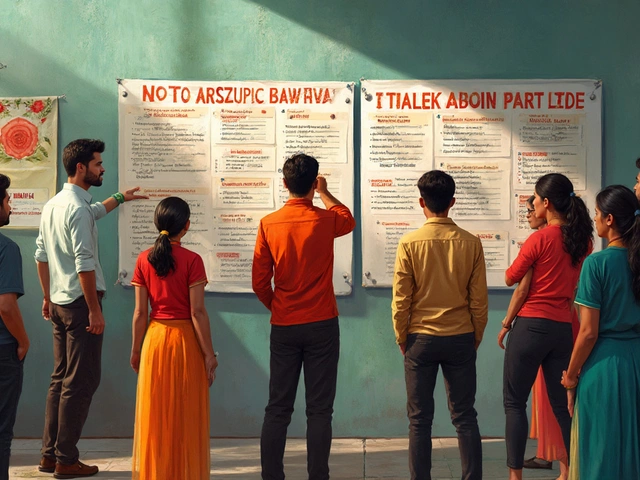You know that feeling when you stare at code and think, “What language are these people even speaking?” Python doesn’t throw most beginners into that panic. You’ll spot real words like print, input, and if—no need for puzzles or deciphering secret codes first. Honestly, most folks say Python looks like plain English for a reason.
But let’s be real: everyone hits some bumps. Maybe you worry about remembering the rules, or it’s intimidating when you see others rattle off code in seconds. That’s normal. Most of us started with the same questions. Even in our house, after one of my kids fiddled around with a Python turtle project, there was a whole lot of confusion and a bit of yelling before excitement won out. Don’t let that early awkwardness make you quit.
If you’re looking into coding classes or curious about starting on your own, it pays to know what’s truly challenging and what’s just new. There’s no magic secret—just a path that gets easier with the right tools and some regular practice.
- Why Python Stands Out for Beginners
- The Real Hurdles (And How To Get Past Them)
- Tips That Make Learning Python Easier
- What To Expect—And Who’s It Good For
Why Python Stands Out for Beginners
Let’s get real—there’s a reason schools, colleges, and even YouTube creators push Python as the go-to starter language. It’s not just some tech fad. Python’s design is simple, its words actually resemble everyday language, and you don’t have to stress about weird symbols everywhere.
One of Python’s coolest features is that you don’t need to declare the type of your variables. For example, you can just write x = 5 and Python gets it. Contrast that with Java, where you’d need to spell it all out, like int x = 5;. This is a big relief for beginners—fewer things to memorize and mess up.
Python hides a lot of the boring plumbing work that other languages shove into your face. You don’t need to write pages of setup code just to print “Hello, world!” Four words, one line, done. That’s honestly motivating when you’re new and want to see quick wins.
Another win? Huge, free libraries. Let’s say you want to make a game, analyze a dataset, or even control a robot. Python probably has a package for it, and installing these is usually just one command. You’re rarely stuck reinventing the wheel.
Here’s a quick look at what makes Python so accessible for new learners:
- No semicolons at the end of every line (seriously, tiny thing, big relief)
- Indentation is required—so your code always looks clean and organized
- Massive online community, so if you get stuck, someone has your answer
- Beginner-friendly documentation that explains things without a computer science degree
Check out how Python stacks up against the most common first programming languages worldwide:
| Language | Percentage of Beginners (2024) | Main Reason Chosen |
|---|---|---|
| Python | 43% | Easy syntax, tons of tutorials |
| JavaScript | 22% | Web development |
| Java | 15% | Used in schools |
| Scratch | 13% | Block-based learning for kids |
| C++ | 7% | Required for engineering |
Here’s the bottom line: Python keeps things friendly for beginners, doesn’t make you wrestle with complex setup steps, and has a crowd cheering you on when you hit a wall. If you want a taste of coding without all the usual headaches, starting here just makes sense.
The Real Hurdles (And How To Get Past Them)
Plenty of people ask, “Is Python just easy marketing talk, or are there real sticking points?” Here’s the honest rundown: Python’s syntax is friendly, but certain challenges come up for nearly everyone who’s learning something new (especially Python). The best way to not get stuck is to know what’s coming—and how to handle it.
First up, indentation. Unlike some languages that use curly braces or words to mark blocks of code, Python cares about spaces at the start of your lines. A single extra space can cause errors that make zero sense until you realize what’s going on. Stick to four spaces for every indent, and let your code editor help with auto-indenting. Trust me, it’ll save you a lot of headaches.
Next: understanding error messages. At first, the dreaded “Traceback” feels more like an insult than a helpful tip. But if you read those messages from bottom to top, they actually tell you what tripped up your program. There are entire websites that translate Python errors into plain English—don’t be shy about copy-pasting them into Google to see what they really mean.
Another common hurdle is that feeling like you need to memorize everything before you can actually do anything. You don’t. Even experienced developers Google stuff constantly. Focus on practicing small problems, like making a calculator or a simple guessing game. That’s where the basics click.
Here’s a big one: the jump from following tutorials to building your own, original projects. That leap feels scary—like riding a bike without training wheels. If you can, tweak existing projects (change the text, add your own features) before you try making something 100% new. Baby steps build confidence way faster than trying to leap straight into the unknown.
"The best way to learn a programming language is by writing small programs and seeing how they work. You'll make mistakes. That's normal. That's good." — Guido van Rossum, creator of Python
- Indent your code carefully—use an editor that helps with this.
- Read error messages out loud—they make more sense than you think.
- Don’t stress about memorizing—searching is part of the job.
- Start with small tweaks before you invent new programs from scratch.
- Work with others—study groups (even online) help you break through mental roadblocks.
Bottom line: every coder, even the pros, fights through these sticking points. What matters most is building a routine, not expecting instant perfection, and mixing in a little patience for yourself. The path’s a little bumpy, but it’s nothing you can’t handle.

Tips That Make Learning Python Easier
Python is supposed to take the sweat out of coding, but there are a few not-so-obvious shortcuts to really speed things up. First, don’t just read about code—actually type it out and run it. You’d be surprised how much better you remember stuff when you break it yourself and fix it on the spot. I’ve seen my kids learn way faster once they stopped copy-pasting and started experimenting—even with basic things like making a digital dice or a guessing game.
Jumping into small projects right from the start is another power move. Something silly like building a rock-paper-scissors game or a calculator teaches you more than a dozen tutorials. Real projects force you to fix errors, look stuff up, and put your thinking cap on. My 10-year-old picked up loops just by creating a "guess the number" game that got him hooked.
Here are some super practical shortcuts and habits for learning Python, whether you’re self-taught or following a class:
- Start with hands-on interactive tools like Repl.it, Google Colab, or Jupyter Notebooks. No installation headaches, and you see results instantly.
- Use cheat sheets. Python’s got tons—grab one for basic commands and keep it open. You’ll reference it nonstop at first. It’s normal.
- Learn by fixing bugs. Run code you find online, break it on purpose, and fix it. This is how pros actually get good.
- Team up with others. There are countless free coding communities like freeCodeCamp and Codecademy forums. Ask every question, even the ones you think are dumb. You’ll get answers way quicker and avoid banging your head in frustration.
- Stick to short, daily practice over marathon weekend sessions. Just 20 minutes a day makes new concepts sink in better. You’re building muscle memory.
For those who like seeing progress, here’s a look at how long, on average, it takes to feel comfortable with Python (based on surveys from various coding bootcamps):
| Learning Setting | Hours/Week | When You Feel Confident (weeks) |
|---|---|---|
| Self-paced (solo) | 5–7 | 10–14 |
| Online class/group | 6–8 | 8–12 |
| Bootcamp | 10+ | 4–8 |
The main thing? Don’t stress about memorizing every Python rule before you start. Search engines are your friend. Even experienced coders Google stuff every single day. Progress comes from doing, tweaking, and failing a bunch of times. And if you have kids around—let them join in. It’s hilarious what they come up with, and you’ll learn a ton together.
What To Expect—And Who’s It Good For
So, what’s the real deal with Python? If you’re brand new to code, expect your first few days to feel like learning to ride a bike: wobbly and a little awkward. But compared to languages like C++ or Java, Python handles a lot of the tough stuff for you. You get less confusing symbols, less set-up, and way more instant feedback. Even Google, NASA, and Instagram use Python, so it’s not just for hobby projects—it’s legit.
Here’s what most people really want to know: who actually sticks with Python? All ages and backgrounds. Seriously. In many schools, kids as young as 10 start with Python, but it’s just as popular for adults switching careers or trying out tech for the first time. If you like solving puzzles, messing around with small projects, or you just want to automate the boring stuff on your computer, Python’s got you covered.
The average time to get comfortable with basics (like making a simple calculator or a to-do list app) is about 2 to 3 months if you spend an hour most days. It’s not instant, but a lot faster compared to some languages—Ruby or JavaScript can take longer for total beginners because they have more confusing parts and less clear error messages at first.
Check this out if numbers help you plan:
| Language | Average Time to Basic Comfort | Beginner Drop-off Rate |
|---|---|---|
| Python | 2-3 months | 38% |
| Java | 4-5 months | 52% |
| JavaScript | 3-4 months | 48% |
Python’s lower drop-off rate helps prove it’s less frustrating for beginners. But nobody loves all parts of learning: you’ll get weird error messages and sometimes your code won’t run the way you wanted. Still, most folks say they keep going with Python because small wins come faster and the online support is massive. Stack Overflow, YouTube, and countless kid-focused resources break down answers in plain English. If you’re someone who learns best by seeing results quickly, or if you just want to build fun stuff—Python is probably your safest bet.
- Kids, teens, and adults can all start with Python
- Perfect if you’re into visual results, like games or graphics
- Great for mixing with science stuff, math, or everyday hacks
- Not just for computer geeks—lots of writers, historians, and hobbyists use it too
Last thing: don’t believe anyone who says you need to be “good at math” to learn Python. If you can break down a problem step by step, you’ll figure out code. All it takes is steady effort and the right help—the rest comes with practice.





